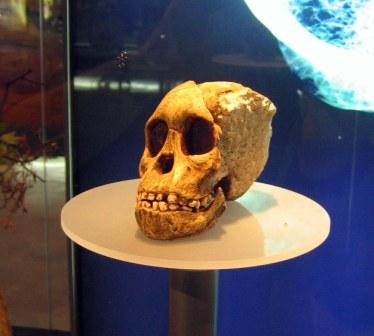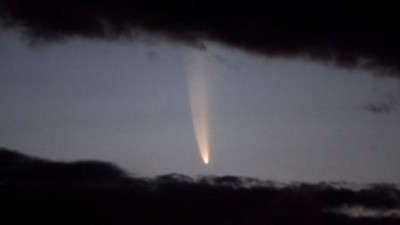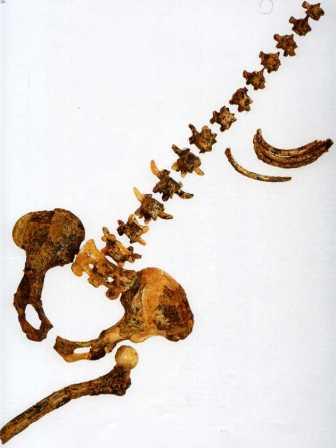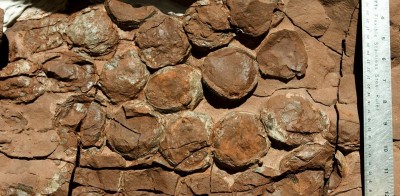Top 10 scientific discoveries in South Africa
Recently Cape Town astronomer Roger Deane and a team of South African-funded researchers have discovered three closely orbiting super massive black holes in a galaxy more than 4-billion light years away – confirmation of the country’s fast-growing expertise in science and technology.
The discovery has been hailed as the tightest trio of black holes known to date, and is remarkable since most galaxies have just one black hole usually with a mass between one million to 10-billion times that of the sun at their centre. That leads us to look at some of the top ten scientific discoveries from South Africa.
Little Foot
In the early 1990s, anthropologist Ron Clarke of South Africa’s University of the Witwatersrand found four small australopithecine foot bones at Sterkfontein. Later, Clarke and his colleagues discovered a nearly complete skeleton embedded in limestone that belonged to the foot. The researchers are still carefully chipping away at the rock to release the skeleton, dubbed Little Foot, but they have already noted that the individual has some characteristics not seen in any other known species of Australopithecus.
Taung Child
The Taung Child (or Taung Baby) is the fossilised skull of a young Australopithecus africanus individual. It was discovered in 1924 by quarrymen working for the Northern Lime Company in Taung, South Africa.
Australopithecus sediba
The most recent major hominid fossil discovery in South Africa occurred in 2010. Lee Berger of the University of the Witwatersrand led a team that found two partial hominid skeletons at Malapa Cave.
Comet striking Earth
A team of South African scientists and international collaborators has discovered the first evidence of a comet entering Earth’s atmosphere and exploding, raining down a shock-wave of fire which obliterated every life form in its path. According to Wits university, the discovery has not only provided the first definitive proof of a comet striking Earth, millions of years ago, but it could also help us to unlock, in the future, the secrets of the formation of our solar system”.
122.52-carat blue diamond
In South Africa we go big when it comes to the discovery of gems, and this one is most likely to be a favourite for the ladies. Recently an exceptional 122.52-carat blue diamond was discovered at the Cullinan mine in South Africa an experts say it could fetch a record price. London-listed Petra Diamonds, the owner of the Cullinan mine outside Pretoria, announced that it had unearthed the diamond, saying in a statement that “the rarity of a blue diamond of this magnitude sets it apart as a truly significant find”.
The Cullinan mine earned its place in history in 1905 with the discovery of the Cullinan diamond, the largest rough gem diamond ever found at 3 106 carats. This iconic stone was cut into the two most important diamonds that form part of the Crown Jewels in the Tower of London – the First Star of Africa, which is mounted at the top of the Sovereign’s Sceptre and which at 530 carats is the largest flawless cut diamond in the world and the Second Star of Africa, a 317-carat polished diamond which forms the centrepiece of the Imperial State Crown.
Mrs. Ples
Mrs. Ples is a popular nickname for the most complete skull of an Australopithecus africanus specimen ever found in South Africa. Many fossils of this species, which are considered to be the distant relatives of all humankind, have been found in the Sterkfontein area, in what has been designated the Cradle of Humankind World Heritage Site, which is situated approximately 70 kilometres southwest of Pretoria. Mrs. Ples was discovered by Robert Broom and John T. Robinson on 18 April 1947.
STS 14
Do not let the code to confuse you; this is a fossilized pelvis, vertebral column and fragmentary rib and femur of the species Australopithecus africanus. The pelvis is estimated to be 2.6-2.8 million years old. Its characteristics are a distinctly human-like shape of pelvic blades, unlike any other animal. The shape indicates a type of bipedalism. This find was the first ever to demonstrate, without a doubt, pre-Homo bipedality.
SK 48
SK 48 is a fossilized skull of the species Paranthropus robustus. It was found at Swartkrans, as with the STS 14 and the Mrs. Ples the SK 48 was discovered by Robert Broom. It is estimated to be 1.8 million years old. It is characterized by a robust appearance, bulging and continuous brow, broad flat face and a deep jaw with large chewing teeth/muscle attachments. The mandible SK 23 was discovered at the same time and in the same location. Even though studies indicate that it came from a separate individual, the two fossils are considered so closely related that they can be studied together. The mandible is also very robust and contains a complete dentition.
Vredefort dome
Imagine an asteroid the size of Table Mountain heading for earth at a speed of 20km per second. Thankfully the meteorite collision that formed the Vredefort Dome happened a long time ago, more than two-million years back, before life as we know it, talk about being lucky. In its wake, pulverised rock powder rained down on the Earth for months, blotting out the sun. But scientists speculate that the incident may have increased the planet’s oxygen levels to the point of making life possible. The cataclysmic event left behind the Vredefort Dome, a South African World Heritage Site.
Dinasaur fosils
Large Jurassic dinosaurs with tiny heads lived in the Eastern Free State about 200-million-years ago, when the giant southern super-continent, Gondwana, was still intact. You can still see fossil traces of these dinosaurs in the sandstone around Clarens. The Massospondylus wandered about in great herds, migrating back and forth between what would millions of years later become Southern Africa and Russia. Massospondylus dinosaurs hatched from eggs about three times bigger than a hen’s egg, but grew into giant creatures 4 to 5 metres long. They had large bodies, long necks and small heads, and long tails.
As far as global standards go, this is further testimony that South Africa is also a leader in science and research.









